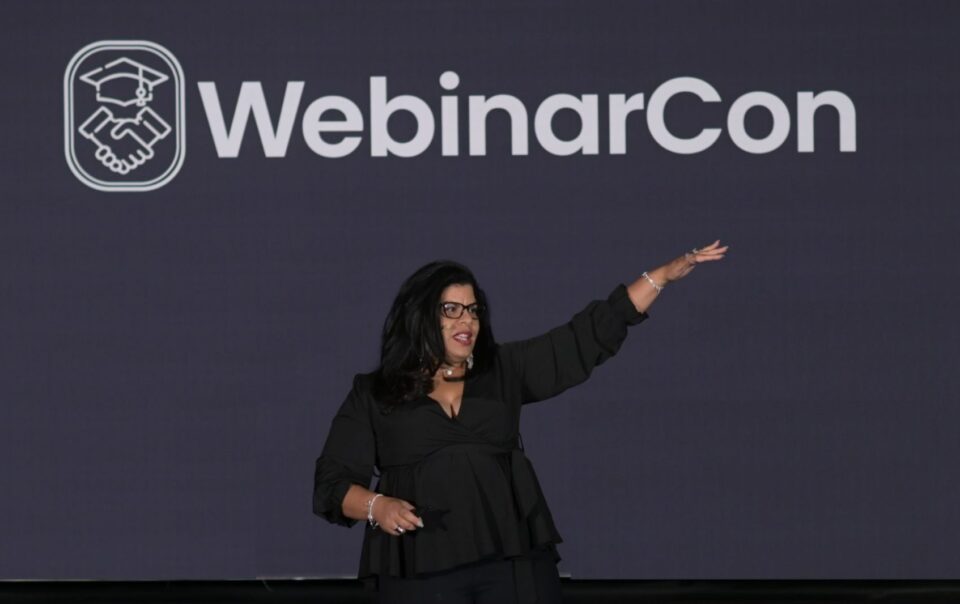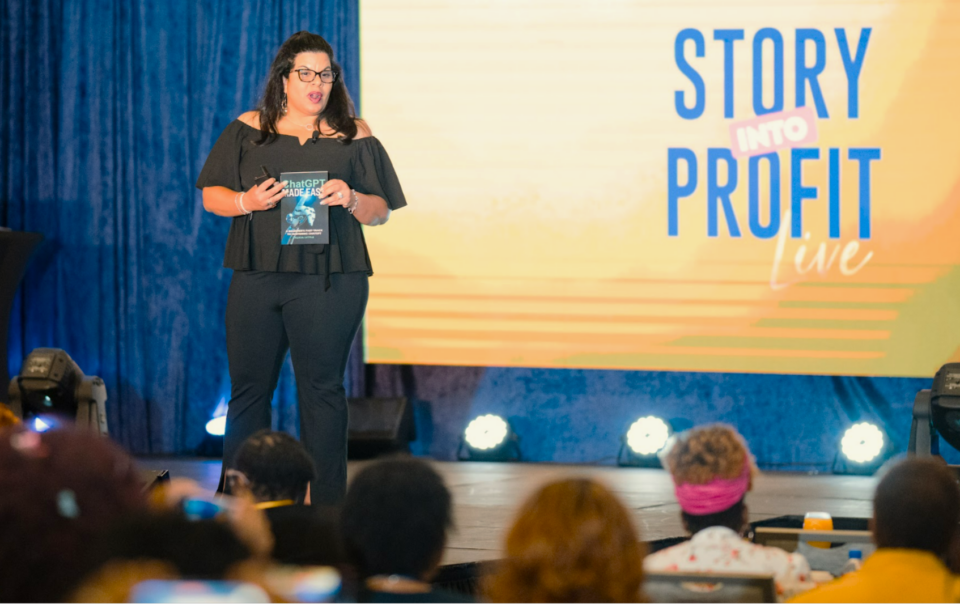
Grab Alicia’s free E-book: “ChatGPT Made Easy A Beginner’s Fast-Track Guide to Mastering ChatGPT.” Click Here!
AI Automation in Real Time: Inside My Circle of Greatness Interview with Nehemiah Davis
What I shared, what we built, and what it looks like to apply AI automation in a modern business — with practical tools, real systems, and measurable results.
In a recent sit-down with Nehemiah Davis — award-winning entrepreneur, author, and founder of the Circle of Greatness Academy — I joined him for a special live episode of his podcast.
If you’re not familiar with Nehemiah’s work, let me explain why this conversation is important.
The Circle of Greatness platform is built to help entrepreneurs move from ambition to execution. It’s not just about mindset or motivation — it’s about implementation. The people in his community are serious about growth, and this episode gave them a front-row look into how I’m using AI automation not just to get more done, but to rethink how things get done altogether.
We walked through the tools I use, the systems I’ve built, and the way I apply AI across every part of my business — from product development to content strategy to lead capture. More importantly, we showed what it means to integrate AI in a way that’s efficient, sustainable, and aligned with how you work.
Here’s where I break down that conversation even further, revealing the tools, strategy, and mindset that transform AI from interesting to indispensable.
From Concept to Delivery in 60 Seconds
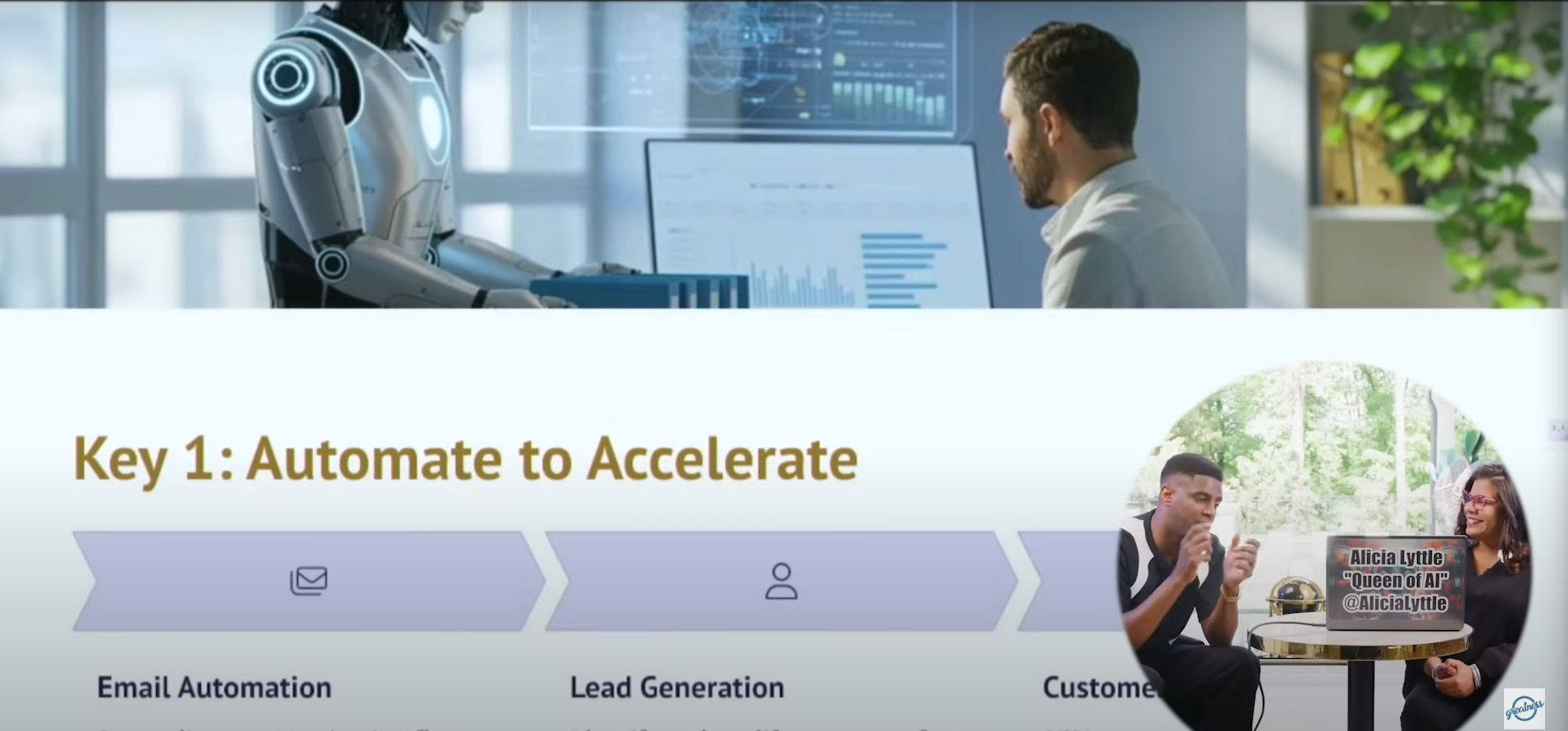
Alicia Lyttle demos how AI automation transforms ideas into polished presentations in seconds — no slides, no formatting, just smart tools that work.
Every entrepreneur knows how long it can take to put together a solid presentation — outlining slides, formatting design, refining copy. It’s a time-heavy task, even when you know your material.
So when we kicked off the episode, I opened Gamma, typed one simple sentence —
“Three Keys to Leveraging AI for Entrepreneurs” — and generated a full eight-slide deck in under a minute.
That single moment reframed the entire conversation.
What used to take hours — sometimes a full team — now takes seconds. And the output isn’t generic. It’s structured, visually polished, and aligned with the kind of message I’d deliver on any stage or in any webinar.
This is one example of what AI-powered productivity looks like in action. It’s not about shortcuts. It’s about removing the lag between idea and delivery so you can respond to opportunities faster — and with better assets.
Tools like Gamma aren’t just presentation builders. They’re execution accelerators. And for entrepreneurs looking to make smart use of their time, this kind of functionality isn’t a nice-to-have — it’s essential.
Voice-to-Product: The New Way to Build With AI
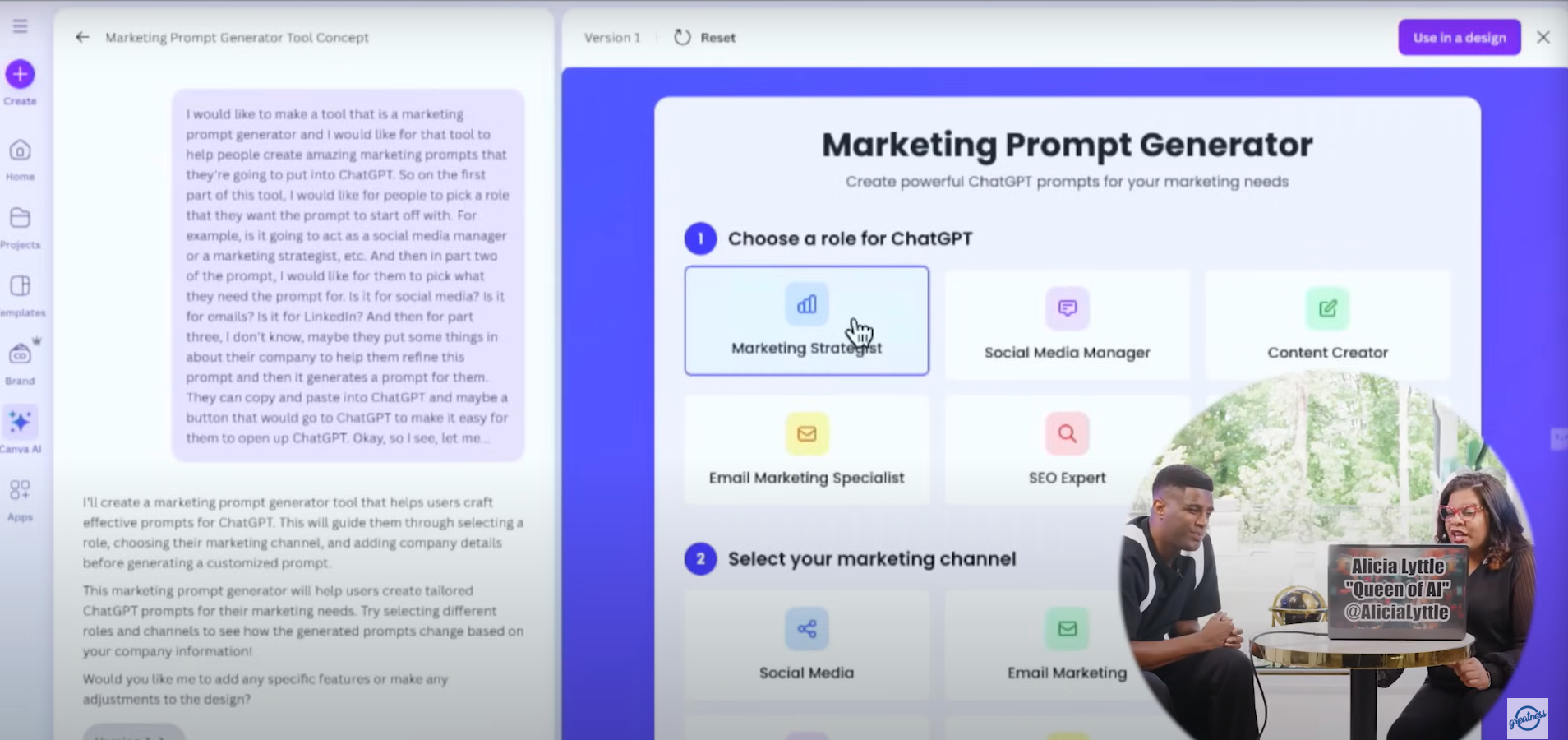
Using ai automation, Alicia Lyttle transforms voice into a live, working product in minutes—no coding required.
From there, we moved on to one of the most exciting demonstrations of the episode: using voice input to build a real, working product — live, in just minutes.
Inside Canva’s AI coding interface, I spoke the idea for a marketing prompt generator tool. I didn’t type a script. No logic flows mapped out, just a simple spoken description of what I wanted and Canva took care of the rest.
The tool was coded, designed, and published to the web before we moved on to the next topic.
That’s a major shift — not just in what’s possible, but in how we approach product creation as a whole.
Today, anyone can create AI digital products that solve real problems without hiring a team or learning to code. It means the time between concept and monetization has never been shorter, and the barrier to entry has never been lower.
If you’ve got expertise, community, or a strong offer, AI can help you build a business with AI tools that extend your value, without draining your time or resources.
Scaling Visibility Without Scaling Effort
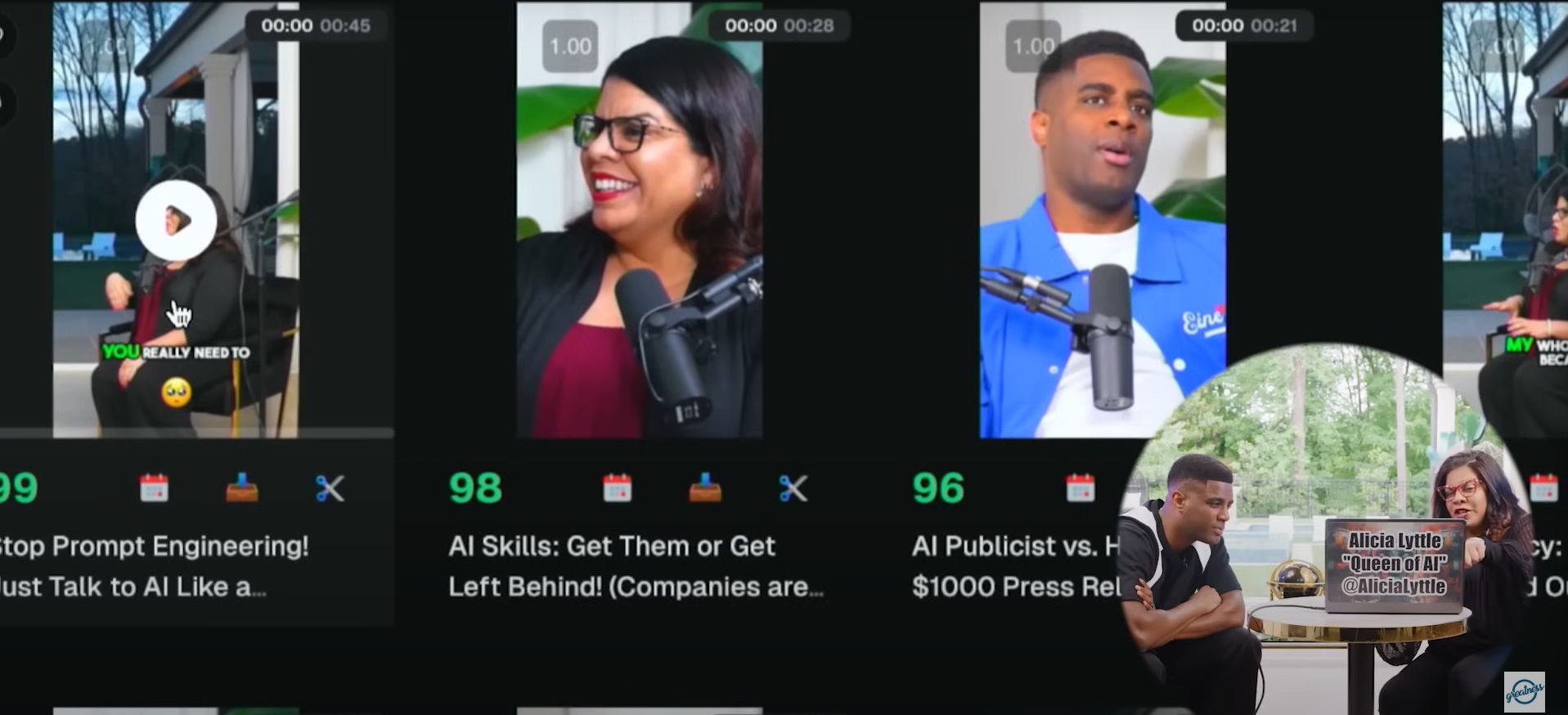
With ai automation tools like OpusClip, Alicia Lyttle multiplies her content output—without multiplying effort.
Nehemiah asked how I manage to show up consistently across multiple platforms. And I’ll be honest — I don’t do it by spending all day creating content.
I walked him through how I use OpusClip to turn a single video — like our podcast episode — into dozens of optimized, social-ready clips.
It handles:
- Clip selection
- Captions, hooks, and titles
- Viral performance scoring
- Formatting for Instagram, TikTok, YouTube, and more
In under 10 minutes, I had 30+ short-form videos ready to go — and not a single one required me to open editing software.
This is what smart AI content creation looks like: consistent messaging, brand alignment, and zero creative burnout.
For service-based business owners, coaches, and course creators, this is one of the first systems I recommend when you’re looking to automate your business with AI. It’s the difference between showing up once and showing up everywhere, every week.
The Tools I Use Every Day
During the episode, I pulled back the curtain on the tools that run my business. These aren’t plugins I try once and forget. They’re part of how I operate every day.
Here’s the stack that drives execution, content, and client experience:
ChatGPT
Not just for prompts — this is the core of my writing system. From email copy and landing pages to automation agents and customer scripts, ChatGPT is fully trained on my voice. It’s my internal strategist and lead copywriter.
Gamma
I build everything from course outlines to live training decks here. It enables me to transition from concept to client-facing asset with zero delay — essential for delivering value on demand.
Perplexity
For research, this is my go-to. It gives me source-backed insights I can trust when preparing workshops, writing newsletters, or evaluating market trends.
Canva
This platform handles my design needs and now also my product development. I use it for everything from social graphics to tool creation, making it one of the most complete AI business tools available.
OpusClip
It repurposes my long-form videos into short, scroll-stopping clips. I use it weekly to create viral-ready content and stay visible across all platforms — no manual editing needed.
ElevenLabs
Voice cloning enables me to narrate training sessions, create lead magnets, and develop audio-based offers in my voice, all without the need for real-time recording.
Smith.ai
This is my voice agent. Monica handles calls, screens inquiries, schedules follow-ups, and ensures I don’t miss opportunities — all of which are aligned with my messaging.
HeyGen
I use this for avatar-based videos when I need to deliver content on camera but don’t have time to film. It’s efficient, brand-safe, and gives me flexibility.
BIGVU
Perfect for scripted video. I upload the script, record cleanly with teleprompter support, and export with high-quality visuals and audio sync.
This stack allows me to move fast without skipping steps. And that’s the goal — build systems that give you leverage, not just speed.
Where to Begin: Start With What’s Slowing You Down
After we broke down the tools, Nehemiah asked the question I hear all the time: Where should someone start if they’re just getting into this?
I always say — start with what’s currently costing you the most time.
Here are five agents I recommend building first:
1. Content Agent
Eliminates the need to write from scratch. Handles messaging, formatting, tone, and consistency — all in your voice.
2. Voice Agent
Creates podcasts, trainings, or lead magnets by generating audio from scripts. Especially helpful when you’re short on time but want to build high-value assets.
3. Visual Agent
From social posts to branded PDFs, these tools give you the design muscle you need, without a designer.
4. Lead Handling Agent
Smith.ai fields and filters inquiries, schedules appointments, and keeps your inbox lean — a must for high-volume seasons.
5. Avatar Agent
Use tools like HeyGen to create short videos for onboarding, announcements, or delivery — so your brand can show up even when you’re off camera.
These aren’t just “helpful” — they’re foundational if you’re looking to scale with AI tools for scaling fast while protecting your energy and time.
See the Full Interview in Action
By this point, you’ve seen how I apply AI automation across content, client experience, and operations. But if you want to watch these tools in real time — from live builds to full breakdowns — here’s your chance.
📺 Watch the Interview: Circle of Greatness with Alicia Lyttle
If you’re ready to see how these systems come together in a real conversation, this is the next place to go.
A Strategic Starting Point
If you’re serious about implementing, start with a clear question, not a tool.
Here’s a prompt I use with clients all the time:
“I made $X last month with these offers. I aim to reach $Y by the end of the next quarter. Here’s who I serve, what I sell, and how I deliver. What systems should I automate with AI to grow efficiently?”
This is how you let AI become a strategist, not just a tool.
And when you begin with strategy, everything you build supports your actual goals, not just your to-do list.
Final Thought
This interview reminded me of the numerous opportunities available to entrepreneurs right now — not to hustle harder, but to work with more effective systems.
AI automation isn’t about doing more. It’s about doing what matters, faster and with more clarity.
When you build the right structure — and connect it to tools that move things forward — you don’t just stay caught up. You move ahead.
Related Articles

Contact Info
- 1150 Malabar Rd SE STE 111 #205 Palm Bay, Florida 32907
- (903) 437-7195
- [email protected]
